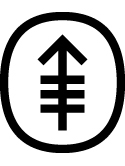| Abstract: |
The pituitary and peripheral responses to L-T4 and L-T3 therapy were studied in 12 patients with congenital goitrous hypothyroidism, in 10 patients with an ectopic thyroid and onset of hypothyroidism at 3–8 years of age, and in 6 patients with adult-onset hypothyroidism, after they had had their chronic thyroid hormone replacement therapy discontinued for 30 days. They were first treated with increasing L-T4 (0.1, 0.2 and 0.4 mg daily) followed by L-T3 (0.05 and 0.2 mg daily) after stopping thyroid medication for another month. Ten normal subjects were treated identically. In normal individuals the peak TSH, α, and TSH- β response to TRH was significantly decreased with 0.1 mg L-T4or 0.05 mg L-T3 daily and was suppressed with 0.2 and 0.4 mg L-T4 or 0.2 mg L-T3daily; serum cholesterol and triglyceride decreased significantly with 0.2 or 0.4 mg L-T4 or 0.2 mg L-J3 daily; testosterone-estradiol binding globulin (TeBG) increased significantly at the same doses. In congenitally hypothyroid patients receiving 0.2 mg L-T4 daily, the mean peak TSH after TRH was 24 ± 17 μU/ml, whereas in patients with an ectopic thyroid or adult-onset hypothyroidism the peak TSH was significantly less at 5.9 ± 8.8 and 5.5 ± 5.7 μU/ml, respectively. Only at the highest doses of L-T4 (0.4 mg/day) or L-T3 (0.2 mg/day) was the TSH response to TRH suppressed in the congenitally hypothyroid group. The α and TSH- β subunit levels followed those of TSH. TeBG levels increased significantly for each group at 0.2 or 0.4 mg L-T4 or 0.2 mg L-T3; the relative increases (%) of TeBG over basal levels were not significantly different in the various groups. Since all patients received similar doses of thyroid hormones (μg/kg of body weight) and had similar serum levels of T4 and T3 on each dose of L-T4 or L-T3, we conclude that congenitally hypothyroid patients have persistent pituitary resistance, but not peripheral resistance, to thyroid hormone. © 1985, Italian Society of Endocrinology (SIE). All rights reserved. |



